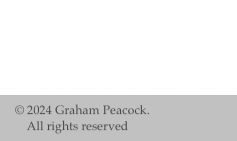|
The New Acrylic Painting
Kenworth W. Moffett Musee d'art Moderne et d'art contemporaine: Nice. (1992)
While not a formal organization, the artists featured in this book all know each other and feel themselves to be part of a group with a shared sensibility and common interests, just like the Impressionists, the Fauves, the Cubists, the Surrealists and the Abstract Expressionists before them. They all live in North America - in small towns in Connecticut and Massachusetts in the United States and in the larger cities of Toronto and Edmonton in Canada. Many of them are still in their forties and in my view they constitute the most exciting new movement or "wave" of painters to appear in twenty-five years. For the first time since Color Field and Minimalism, modernist art has a whole new look and feel. It stands out by virtue of its aggressive aggressiveness of relief, texture, color, and drawing.
Two strikingly novel features of the new work are very bright color - often fluorescent - and very thick, plastic paint. Fluorescent color, of course, has been around since the sixties. It is uniquely modern color but it has not been used by the best modern painters until now. They have resisted, its amazing intensity for the same reason that some viewers are put off by the plastic quality of acrylic paint. Plastic and fluorescent color are wholly associated with the lowest levels of popular taste and therefore the vulgar and non-serious. It has taken the aggressive modernism of these new young painters to show how a big, strong, exciting modern art which is also sophisticated and serious, can be fashioned from these "vulgar" qualities.
In embracing modern materials and effects, these painters revivify abstraction and develop it further. Most important is their use of the new acrylic paint. While painters have been using acrylics since the late fifties, these painters are the first to stress the distinctly plastic character of this new medium. I call their work the New Acrylic Painting.
It has emerged, hand in hand, with the development of acrylic gel. As a way to extend plastic paint -to make it last longer and therefore be cheaper - gel has existed since the early seventies, but recently, especially under the stimulus of the New Acrylic Painters, it has undergone a period of rapid technological development.
It has been made a completely clear substance with an enormous range of consistency from fluid to buttery to viscous. This makes it a perfect vehicle for acrylic pigment, allowing the thickest impasto, while retaining as much transparency as the painter could wish for. The acrylic painter now has a medium as rich and flexible as the traditional oil medium and one that has many qualities oils do not possess. These include the capacity to dry quickly and also, when the gel is thick enough, to act as a glue or adhesive.
The unique properties of acrylics have turned out to be especially suited to a direct, spontaneous, lyrical art, which is why almost all of today's leading abstract painters use acrylics. This could be called the biggest change in the medium of Western Painting since oil replaced tempera in the early 16th century.
Most of the technical innovations have been made by the American paint maker, Sam Golden, and his son, Mark, who custom make paint for the individual artist's special needs. Here is a true marriage of art and science: the art of painting stimulating and being stimulated by the new, evolving, acrylic medium. Along with new gels, this creative synergy has resulted in the Goldens' invention of a whole range of other painting materials, all of which can be seen in the works illustrated in this book: metallic paints (bronze, gold, silver, etc.), glitter paint, "interference" paint (which is iridescent) cement-like but lightweight pumice paint and acrylic gels...
Extract from the text of Kenworth W. Moffet "The New Acrylic Painting" New New Painting Editions NEF Casterman, 1992.
|
|
|



